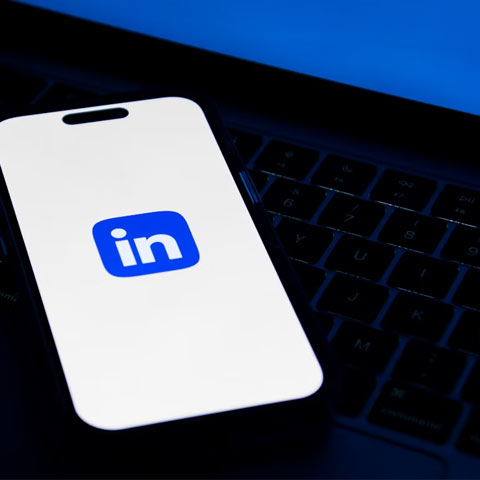Creating Data-Driven Pitches: A Guide for Winning New Business with Social Insights

When a pitch request comes into your agency, it’s important to have all systems ready to go to build an exciting and unique brief that will blow your agency competition out of the water. What’s the best way to accomplish that goal?
Here’s how to pull together the best insights for your pitch brief that will meet and far exceed the requests of your clients.
Get the downloadBelow is an excerpt of "Creating Data-Driven Pitches: A Guide for Winning New Business with Social Insights". To get your free download, and unlimited access to the whole of bizibl.com, simply log in or join free. |

|
1. Investigate Brand, Competitors, and Market Insights
Your pitch has to connect with your audience, and while it may seem obvious to provide an explanation of how the brand, the market and key competitors are perceived over social, there are often some interesting and surprising insights in the social data that those being pitched to did not expect.
So first, what’s in the brand?
Compare research across channels: social, blogs, forums, news, reviews, any source to process the public perception of the brand. Aggregating all of that information into a digestible visual can be difficult. The visualizations built within a social analytics platform can allow busy agency team members to demonstrate excellent data quickly and efficiently. This is where it’s important to validate the data that your analytics tool provides. The more reliable the data, the better the solutions you can be providing to clients.
Social analytics metrics allow you to analyze volume, trends over time, and content sources all in one key visualization. For example, the conversation surrounding Olympus cameras occurs on several social media platforms including Twitter and Tumblr (see above). Determining where and how consumers discuss brands and products will strengthen a pitch that focuses on online advertising campaigning, and help agencies track online campaigns.
Another excellent aspect of using social insights in your pitch allows you to demonstrate the difference between the owned conversation that is directed and grown from the brand’s own initiatives, and the organic or earned conversations that may developing around topics that the brand might not be aware of. This advantage and potentially untapped reservoir of brand knowledge will certainly grab the attention of those who are being pitched to.
Who is the brand in competition with?
Sometimes a leader can emerge over social before the hierarchy has become ingrained in the market. By keeping an eye on the social media conversations with competitors, you’ll be able to keep track of rising trends and fluctuating asks from product, sales, marketing and other business sectors across your competitive landscape. This gives agencies an edge when navigating which areas to focus on in pitching. We can see here (below) how using a social analytics tool can help provide brand context when looking to compare a top brand against a key competitor.
[Table or chart in PDF file - Register or sign in to view]
In this visual, you can see what conversations resonate among audiences discussing Budweiser and Sam Adams, including their overlapping interests and key differentiators. This shows agencies where to find the strongest brand advocates, opposed to the areas competitors have more strength, which reveal opportunity for improvement and ammunition for the pitch.
Case Study: Uncovering market insights through social analytics in the consumer electronics industry
By monitoring the unbranded conversation that surrounds key products, ideas, and strategies within your industry, you’ll be able to identify possible market opportunities with speed and efficiency. Knowing what matters in unbranded conversation can help inform decision-making in everything from new product launches, to brand crisis management
LG Electronics produces a wide array of products including televisions, mobile devices, and home appliances. Analyzing conversation surrounding home appliances on Twitter offers brands like LG insights into conversation topics and audience characteristics. Not surprisingly, Twitter users in the home appliance audience are 99 times more interested in kitchens than the general Twitter audience. Diving into Segment Insights offers LG valuable information for how to enter the appliance conversation.
Want more like this?
Want more like this?
Insight delivered to your inbox
Keep up to date with our free email. Hand picked whitepapers and posts from our blog, as well as exclusive videos and webinar invitations keep our Users one step ahead.
By clicking 'SIGN UP', you agree to our Terms of Use and Privacy Policy


By clicking 'SIGN UP', you agree to our Terms of Use and Privacy Policy
2. Build an Entire Strategic and Creative Pitch from Deeper Social Insights
When a pitch request comes in, and there’s only so much time for the initial strategy session, it’s important to bring your A game to the brainstorming meeting. Agencies using social insights can build queries in minutes, see the topics and trends in conversation, and align strategy with topics those audiences are focusing on. This can be instrumental when leveraging data for strategy. So what are those first questions about?
Align brand messaging and popular topics
So you’ve taken the first steps, you understand your potential pitch audience, what their brand is about, what their competition looks like, and what the industry conversation involves. Let’s then take another step to deepen our analysis. What does the brand want to say about itself? What connects to their key audiences and what doesn’t? Brand messaging is a crucial component of understanding what your (potential) client wants, and enables you to be fully informed for the pitch.
What language defines the potential client’s message, their “voice”? Who does that line of messaging resonate with? What’s the one idea they want their customers/potential customers to walk away with to know who they are? Social insights allow agency teams to understand the vernacular of their customers, connecting their campaign strategy to the existing perception of the brand.
Twitter Metrics like Top Hashtags, Mentions, and Retweets allow agencies to separate content that resonates with brand audiences from that which does not. For instance, Blackberry’s Top Hashtags highlight a variety of products like #silveredition and #blackberry10 that have generated conversation. Tracking hashtag use over time can strengthen pitches and campaigns. This gives agencies the data to feel secure in knowing that what they’re recommending will resonate with brand audiences.
With insights from topic data, you can see the valuable content that’s trending among the potential client’s audience. You can also dive into the segment of conversation, seeing what resonates across that slice of conversation throughout social media. This helps agency analysts understand why moms find Cheerios commercials interesting, see why dads watch The Voice, or reveal other powerful insights that are unique and interesting
One important question that social data can answer: is it clear that people even know what you’re selling? Sometimes, under everything else, the idea that a brand strategy is easily understood, or the product line itself, is simply unclear. Social data can demonstrate how to clarify those perceptions to make sure consumers are aware and excited about brand products.
All of these questions make up the core of the business, meaning, does this public perception align with the strategic ideal that the client company is working for? Social insights are one tool to help you prove the success of your client’s identity, straight from the consumers’ responses themselves. Advanced social analytics tools provide more than surface level detail: agency representatives can rely on the deeper value that might surprise the audience listening to the pitch. It’s also the reliability of these tools that define their worth for the pitching team. If the data can’t be supported with verified, indexed content and patented technology, it becomes a lackluster source for proving new targeting and market strategies during the pitch.
In this visualization, we can see the flexibility of the opinion analysis in providing customizable categories of conversation, which provides users the ability to monitor those specific behaviors or shifts in conversation over time to evaluate effectiveness when disseminating key messaging. In the lifecasting section of the visual, we can see and monitor the behavior of shoppers at the moments before, during, and after they purchase Oreos in the grocery store. This level of insight is impossible without a powerful analytics platform.
3. Target the Relevant or Untapped Audience
After brainstorming and landing on a potential strategy to target the company’s consumers, agency teams can go back to their analytics and research what insights can be proven with deeper-dive analyses. What are some of the insights the teams are looking for?
For understanding audience discussion, what language do they use to communicate? Brands in the teen fashion industry communicate differently over social media than financial firms. What’s the sweet spot for resonating with multiple demographics successfully? What are some key hashtag conversations or logos to review within the brand itself? Are they reaching a different audience than the social brand standard? These are all ways to tap into unique social strategies to support across your client’s brand perception.
One way to create content that easily crosses boundaries is to use visual elements and widely-used hashtags. Olympus’s Twitter content is primarily composed of high-quality photographs which highlight their products’ capabilities rather than the products themselves. Olympus can reach unbranded conversation across the globe and win over potential customers when stunning photographs are paired with general hashtags.
Be specific. Bring deeper insights to your potential clients
Use social media analytics to narrow the focus in any way possible—who will find the campaign most useful, for example: is the “core” primary audience younger or older, male or female, rural or urban, conservative or liberal? Focus on a target audience using demographic and psychographic contexts. We can understand these key insights about the client’s audience as well as their knowledge and beliefs related to topics through social analysis.
Want more like this?
Want more like this?
Insight delivered to your inbox
Keep up to date with our free email. Hand picked whitepapers and posts from our blog, as well as exclusive videos and webinar invitations keep our Users one step ahead.
By clicking 'SIGN UP', you agree to our Terms of Use and Privacy Policy


By clicking 'SIGN UP', you agree to our Terms of Use and Privacy Policy
In our analysis of Warby Parker’s social discussions (a prolific social brand), we can see the brand’s public persona has strongly connected with their social fans. Top conversations surrounding the brand focus on their innovative business model, how they are participating in social media, and their social impact as a company. Brand perception is powerful, and it’s crucial to be able to break down these factors when targeting the audience with your planned pitch strategy. Social insights allow agencies to understand the core audiences of the brands, as well as potential audiences to target with their campaigns for the pitch.
4. Apply It All, Within the Request: Framing the Campaign
After evaluating all of the pieces of the brand in question, ask yourself: what does this particular campaign aim to achieve? What request specifically has your team been asked to meet? Social data can help you address these categories across a potential client’s brand to build a powerful and refined marketing strategy: what are the awareness objectives? What’s the information gap that this advertising campaign is addressing? Does the campaign aim to challenge misunderstandings?
Social data can provide excellent context to the market perception of the brand or product that your pitch brief will be targeting. As an example, we’ve provided an analysis on how diabetes conversation is misconstrued across social media. The public perception of appropriate nutrition is not actually matching the health recommendation to those who suffer from the disease. These inherent flaws can be addressed by The American Diabetes Association to help spread the word and clarify key points surrounding this disease. In the same style, agencies can research their client’s brand, identifying possible misnomers and potential negative triggers in discussion, and remedying them with a particular campaign.
Uncover the reason for the new pitch.
What are some of the key factors to sell the campaign? Why did the brand reach out for a new agency to represent them? Was there an incident or publicity opportunity that served their company with some backlash? Historical data will allow agencies to understand any shifts in the brand, and why this pitch needs to focus on different strategies than the listeners to the pitch have seen in the past.
Understand and avoid brand vulnerabilities
What behavior does the campaign aim to influence? What negative behavior does the campaign aim to reduce? Social analytics are particularly useful when managing a potential point of crisis within a brand. We can see within this frozen pizza company (DiGiorno) example, consumers were concerned by a brand message that used a domestic violence hashtag for brand awareness.
What started out as an unfortunate situation that could have had a major impact on brand perception, ended up as only a small portion of the overall brand discussion moving forward. By analyzing conversations throughout campaigns, agencies can see where brands are sensitive towards previous campaigns or crisis points, and strategize effectively for moving the brand’s image forward and away from the difficulty they might have faced.
5. Time-to-value: Why Every Pitch Needs Social Data
So when agency teams are up against the clock, providing key insights for a potential client pitch with a 24-hour turnaround, it’s the speed to insight that makes social data so useful and powerful for building effective and innovative pitches.
Analysts need a platform that will dive deeper than vanity metrics, and digital marketers need to be able to paint a picture of the audience to target, understanding the content and design elements that are trending within these communities.
Social data provides these solutions and more to meet the needs of the pitching team, to iterate and build a goto-market strategy that a brand has never seen or would be unable to see without the power of social insights.
Want more like this?
Want more like this?
Insight delivered to your inbox
Keep up to date with our free email. Hand picked whitepapers and posts from our blog, as well as exclusive videos and webinar invitations keep our Users one step ahead.
By clicking 'SIGN UP', you agree to our Terms of Use and Privacy Policy


By clicking 'SIGN UP', you agree to our Terms of Use and Privacy Policy









